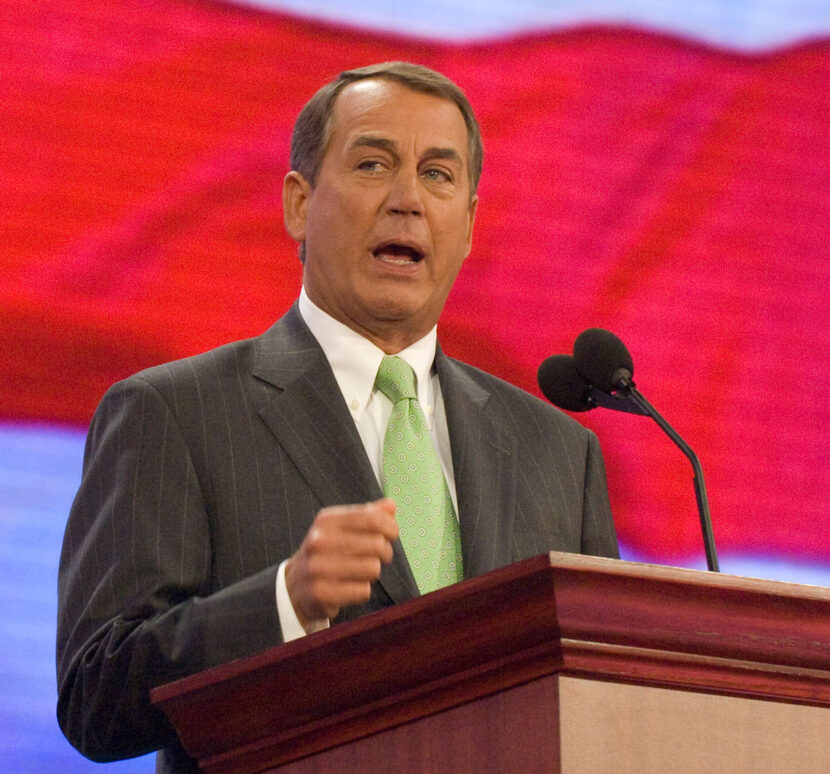- Current Events New Alabama Congressional District Selects Candidates
- Current Events Nebraska Rejects Winner-Take-All Proposal
- Citizenship Voting Under Age 18
- Citizenship Citizenship in Action
- Democratic Party Biden’s and Trump’s Recent Primary Results
- Elections Trump and Biden Win South Carolina and Michigan Primaries

Race for the House 2012
Republicans gained control of the House of Representatives in the 2010 elections. What look will the Congress that is elected in November 2012 take on?
The Republicans’ sweeping victory in 2010—a net gain of 64 seats over 2008—was fueled by economic woes. Political analysts say that the three economic issues that mattered most to voters were:
- Rising unemployment,
- the mortgage crisis,
- and concerns over the health care law.
A net gain of 64 seats is one of historic proportions. Here are the results of some significant House elections in which one party claimed a substantial victory.
Historic House Elections
| Election Year | Result | What caused it |
| 1932 | Democrats gain 97 House seats |
|
| 1940 | Republicans gain 72 House seats |
|
| 1994 | Republicans gain 54 House seats |
|
Presidential v. Off-Year Elections
Presidential election years are years in which elections are held for the president, members of the U.S. House of Representatives, and some members of the U.S. Senate.
Off-year election years are years in which elections are held for members of the U.S. House of Representatives and some members of the U.S. Senate, but not the president.
The chart shows the results for House elections. In 2012, voters are electing the members of the 113th United States Congress, composed of the U.S. Senate and the U.S. House of Representatives. The 113th Congress will serve a two-year term beginning in January 2013.
House of Representatives by Party
| Congress(Years) | Democrats | Republicans | Independents | Presidential Election Year? |
| 105th (1997-1999) |
206 | 228 | 1 | Yes |
| 106th (1999-2001) |
211 | 223 | 1 | No |
| 107th (2001-2003) |
212 | 221 | 2 | Yes |
| 108th (2003-2005) |
205 | 229 | 1 | No |
| 109th (2005-2007) |
202 | 232 | 1 | Yes |
| 110th (2007-2009) |
233 | 202 | 0 | No |
| 111th (2009-2011) |
257 | 178 | 0 | Yes |
| 112th (2011-2013) |
193 | 242 | 0 | No |
| 113th(2013-2014) | ? | ? | ? | Yes |
Source: Office of the Clerk – U.S. Capitol, Party division totals are based on November election day results
View the complete chart online.
The first five elections on the chart show no big shift in party among the voters. But the last three elections had more unexpected results:
2006 During Republican George W. Bush’s second term in office, Democrats pick up 31 seats.
2008 Democrat Barack Obama wins presidency; Democrats pick up 24 seats
2010 During Obama’s first term, GOP picks up 64 seats
Trends to Track
What will happen in 2012? Here are some trends to track:
- More voters vote in a presidential election year than in an off-year election.
- Candidates for Congress are likely to have the advantage of a popular candidate for president at the top of its ticket. A landslide victory for a presidential candidate translates into more seats in Congress for the party.
- No consistent trend emerges if the presidential election is close.
- Parties that pick up a substantial number of seats in one election have a tougher time of it in the next election. That party is likely to lose at least some its gains—but it’s difficult to add more.


